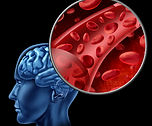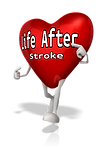St Mary's Hospital Stroke Rehabilitation Unit
Phoenix Park, Dublin, Ireland


John's Story
John is a 67 year old married gentleman who lives with wife and daughter.
John enjoyed good health and worked full time in a high level job. His wife works full-time also.
The couple live in a 2 storey house with ground level bathroom facilities and space to convert a downstairs room into a bedroom if required.
Pre Stroke Introduction
John was admitted to hospital in June 2016 following a history of vertigo, headache and vomiting. A CT brain reported a large Left Cerebellar Infarct.
James spent 30 days in acute Hospital.
Stroke Acute Care
While in Acute Hospital John was assessed as a candidate for rehabilitation in Isolda stroke rehabilitation unit. The assessment identified the following:-
• John required hoist transfers with the assistance of 2 people
• John had poor sitting balance requiring assistance of one person to sit at the edge of the bed and could tolerate only 20 minutes sitting out in the wheelchair.
• He required moderate assistance of one person and prompting for personal activities of daily living.
• John fatigued easily and became nauseous if sitting for long periods of time.
• He presented poor eye contact when engaging with other people, poor co-ordination, and presented language difficulties.
• A cognitive assessment identified deficits in Visio-spatial and executive skills and some environmental neglect.
• There was evidence of anxiety and fear in what has happened to him since he had the stroke “I’m very tired; I’m scared about what’s happen and where I’m going”.
John was identified as having good potential for stroke rehabilitation and arrangements were made for transfer to Isolda stroke rehabilitation unit.
Assessment for Stroke Rehabilitation
John arrived on Isolda Stroke Rehabilitation Unit in July 2016. An initial assessment on admission identified the following deficits as a result of his stroke:-
• Required hoist for transfers,
• Assistance by one person to sit at the edge of the bed
• Difficulty following two stage commands ,
• Impulsive and poor safety awareness,
• Difficulty with sequencing and planning the tasks,
• Unable to make eye contact during conversation,
• Mild neglect to left side,
• Left upper limb and lower limb strength - lack of muscle control or coordination of voluntary movements, such as walking or picking up objects).
• Unable to sit in a standard wheelchair - using a high dependency wheelchair on arrival.
• Required moderate assistance of one person for personal activities of daily living.
Initial goals set for John by the rehabilitation team included reducing his wheelchair to a standard one and for John to participate in a full schedule of stroke rehabilitation.
Arrival on Isolda Stroke Rehabilitation Unit
John’s progress was slow and he made small gains:
-
Required assistance of one person with washing and dressing technique
-
Ross return for all transfers with assistance by 2 people
-
Prompting and supervision using Left hand
-
Trial of step transfers with assistance by 2 people
-
Required supervision of 2 people to stand
-
Was tolerating well the standard wheelchair and sitting for 2 hours
-
Spatial awareness improved
John was verbalizing that he feels safe and empowered by the team on his recovery. His wife was in attendance daily motivating him at all the times.
4 Week Progress Update
John continued to make progress:
-
Required prompting for personal activities of daily living
-
Required verbal support for transfers
-
Continuing to have difficulties with sequencing and motor planning
-
Required redirecting during activities
-
Therapy performance fluctuated due to fatigue and stres
-
Increased transfers technique
-
Tried to progress to complex comprehension (needed support)
-
Eye contact was improved but poor when focused on other task
-
Gained weight
It was evident that with further rehabilitation John had potential to improve more. At twelve weeks post stroke the physiotherapist requested extension of his rehabilitation to maximise gains.
The rehabilitation journey continued and John was pleased with his progress, in particular his mobility - his wife was trained to support him with transfers. He was sleeping well at night and felt better too.
8 Week Progress Update
After sixteen weeks in Isolda unit John had made excellent progress.
• He was mobilising with minimal assistance of one person for indoors and outdoors
• Required close supervision with all transfers
• Required assistance of one person with stairs
• Required set up and supervision for washing and dressing technique
• He successfully completed the self-administration of medication programme being independent
John was discharged home in December 2016 and happy to walk out the door on his own feet. His wife was also emotional to have John back home and to start the next chapter of their life, a “Life after stroke”.
16 Week Progress Update - Discharge
John attended the Stroke follow up Clinic in the Outpatients Department in St. Mary’s Hospital with his wife.
At examination he presented good mood, sleeping well at night eating well and healthy. He continued with physiotherapy sessions to improve strength and mobilisation in his home arranged privately.
He mobilises with supervision with the aid of walking stick indoors and 4 wheel rollator outdoors. He continues with appointments in the Mater which is showing a good recovery on his orientation and cognition.
John enjoyed travelling before his stroke and continues to travel a lot to Spain.
He has a positive outlook on life and is enjoying his “life after stroke” with his wife. He attends the Stroke Support Group in St Mary’s where he shared his story on his recovery to other stroke survivors.
4 Weeks Follow Up in
Stroke Follow Up Clinic





Volunteer Stroke Scheme (VSS)
Tel 01 6346925

National Heart & Stroke Helpline
Freephone 1800 252550